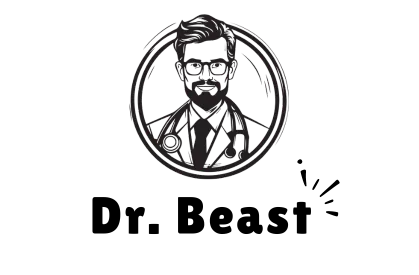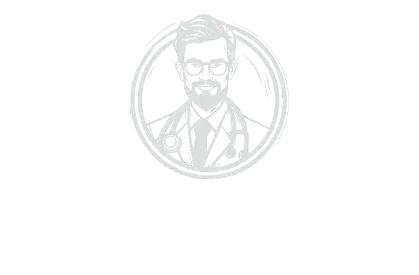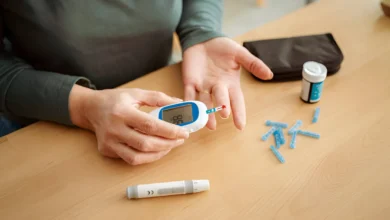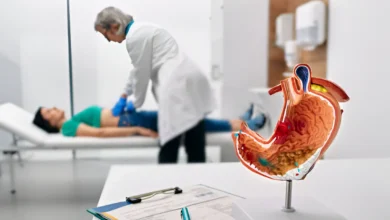Hypertension “High Blood Pressure” : The Pressure Cooker!

Hypertension, often referred to as the “silent epidemic,” is a formidable health issue affecting millions worldwide. Despite its prevalence, hypertension frequently goes unnoticed due to its insidious nature, quietly wreaking havoc on the body without obvious symptoms. This condition, commonly known as high blood pressure, is a major risk factor for cardiovascular diseases, stroke, and other life-threatening complications. In this detailed exploration, we aim to demystify hypertension, covering its definition, types, prevalence, causes and triggers, signs and symptoms, potential complications, and guidelines for diagnosis, treatment, and prevention. Whether you’re managing hypertension or seeking to educate yourself on this critical health matter, this comprehensive guide will equip you with the knowledge necessary to tackle hypertension effectively.
♦ Definition
Hypertension is a chronic medical condition characterized by consistently elevated blood pressure in the arteries. Blood pressure readings are composed of two numbers: the systolic pressure (the force exerted when the heart beats) and the diastolic pressure (the force when the heart rests between beats). A normal blood pressure level is generally around 120/80 mmHg. When readings consistently exceed 140/90 mmHg, a diagnosis of hypertension is made. This chronic elevation in blood pressure increases the heart’s workload and can lead to significant health problems if left unchecked.
♦ Types of Hypertension
Hypertension is generally classified into two main types:
1. Primary Hypertension:
This is the most common form, accounting for approximately 90-95% of cases. It develops gradually over many years and is not attributed to a specific cause. Instead, it is believed to result from a combination of genetic, environmental, and lifestyle factors.
2. Secondary Hypertension:
This type is less common and occurs as a result of an underlying condition, such as kidney disease, adrenal gland tumors, or certain medications. Secondary hypertension tends to appear suddenly and often causes higher blood pressure than primary hypertension. Treating the underlying cause can often alleviate secondary hypertension.
♦ Prevalence
Hypertension is a global health issue affecting over 1.13 billion people worldwide, according to the World Health Organization (WHO). It is particularly prevalent in low- and middle-income countries, where healthcare systems may struggle to manage the burden of chronic diseases. In the United States, nearly half of all adults have hypertension, with only about one in four having their condition under control. The widespread nature of hypertension highlights the urgent need for effective public health strategies and individual interventions.
♦ Causes and Triggers
The exact cause of primary hypertension is not fully understood, but several factors are known to increase the risk of developing the condition:
1. Genetic Factors: A family history of hypertension increases the likelihood of developing it, indicating a genetic predisposition.
2. Dietary Habits: Diets high in sodium and low in potassium can raise blood pressure. Processed foods, which are often high in salt, contribute significantly to hypertension.
3. Physical Inactivity: Lack of regular physical activity can lead to weight gain, which is a risk factor for hypertension. Exercise helps maintain a healthy weight and improves heart health.
4. Obesity: Excess body weight increases the risk of hypertension by exerting extra pressure on the heart and blood vessels.
5. Alcohol and Tobacco Use: Both excessive alcohol consumption and smoking are linked to increased blood pressure. Smoking damages blood vessels and accelerates the hardening of the arteries.
6. Stress: Chronic stress may contribute to hypertension, although its exact role is complex and multifactorial. Stress management techniques can help mitigate its impact on blood pressure.
7. Age and Gender: The risk of hypertension increases with age, and it is more common in men than women until about age 64, after which it becomes more common in women.
♦ Signs and Symptoms
Hypertension is often called the “silent killer” because it typically has no symptoms until significant damage has occurred. However, when blood pressure levels become dangerously high, some individuals may experience:
1. Severe Headaches: Intense headaches can indicate a hypertensive crisis and require immediate medical attention.
2. Fatigue or Confusion: Unexplained fatigue or confusion may result from high blood pressure affecting brain function.
3. Vision Problems: Blurred vision or other visual disturbances can occur if hypertension damages blood vessels in the eyes.
4. Chest Pain: Chest discomfort may signal that the heart is under strain from elevated blood pressure.
5. Difficulty Breathing: Shortness of breath can occur if hypertension affects the heart and lungs.
6. Irregular Heartbeat: An irregular or forceful heartbeat may be felt in the chest or neck.
7. Blood in the Urine: This can be a sign of hypertension-related kidney damage.
These symptoms typically indicate a hypertensive emergency, requiring prompt medical evaluation and treatment.
♦ Complications
If left untreated, hypertension can lead to severe health complications, including:
1. Heart Attack and Stroke: Hypertension can cause damage to the arteries, leading to blockages or ruptures that result in heart attacks or strokes.
2. Heart Failure: The heart may become enlarged or weakened due to the increased workload, leading to heart failure.
3. Aneurysms: High blood pressure can cause blood vessels to weaken and bulge, forming aneurysms that can rupture and cause life-threatening bleeding.
4. Kidney Damage: Hypertension can damage the blood vessels in the kidneys, impairing their ability to filter waste from the blood effectively.
5. Vision Loss: Hypertensive retinopathy can occur when high blood pressure damages the blood vessels in the eyes, leading to vision impairment or blindness.
6. Metabolic Syndrome: Hypertension is a component of metabolic syndrome, a cluster of conditions that increase the risk of heart disease, stroke, and diabetes.
♦ When to See a Doctor
Regular monitoring of blood pressure is crucial, especially for individuals with risk factors such as a family history of hypertension, obesity, or existing health conditions. It is important to consult a healthcare provider if you experience persistent symptoms associated with high blood pressure or if your blood pressure readings consistently fall outside the normal range. Early detection and management of hypertension can prevent the progression of the disease and reduce the risk of complications.
♦ Diagnosis
A. Blood Pressure Measurement
The diagnosis of hypertension is based on accurate and consistent blood pressure readings taken on at least two different occasions. BP should be measured using the following methods:
- Proper Technique: Blood pressure should be measured with a validated cuff on the arm, in a relaxed setting, while the patient is seated for 5 minutes.
- Automated Devices: Can be used for consistent readings, though manual readings with a stethoscope are still common.
- Out-of-Office Monitoring: Ambulatory blood pressure monitoring (ABPM) or home blood pressure monitoring (HBPM) can be used for more accurate, long-term tracking. This is especially helpful to confirm a diagnosis and detect white-coat hypertension (elevated BP due to anxiety in a clinical setting).
B. Diagnostic Criteria (AHA/ACC Guidelines)
- Normal BP: Systolic BP < 120 mm Hg and Diastolic BP < 80 mm Hg.
- Elevated BP: Systolic BP 120–129 mm Hg and Diastolic BP < 80 mm Hg.
- Stage 1 Hypertension: Systolic BP 130–139 mm Hg or Diastolic BP 80–89 mm Hg.
- Stage 2 Hypertension: Systolic BP ≥ 140 mm Hg or Diastolic BP ≥ 90 mm Hg.
- Hypertensive Crisis: Systolic BP > 180 mm Hg or Diastolic BP > 120 mm Hg (medical emergency).
C. Confirming Diagnosis
HTN is typically confirmed when blood pressure remains elevated on multiple occasions. If BP is ≥ 140/90 mm Hg on at least two different visits (separated by several weeks), then HTN is confirmed.
Additional diagnostic tests may be performed to identify secondary causes or complications:
- Laboratory Tests: Blood tests (e.g., electrolytes, kidney function, thyroid function, and blood glucose) to check for underlying causes (e.g., kidney disease, hyperaldosteronism).
- Urinalysis: To assess kidney function.
- Electrocardiogram (ECG): To detect signs of heart damage (e.g., left ventricular hypertrophy).
- Echocardiogram: To evaluate the heart’s structure and function if there is suspicion of damage from uncontrolled HTN.
- Ambulatory Blood Pressure Monitoring (ABPM): Continuous BP monitoring over 24–48 hours, especially useful in diagnosing “masked hypertension.”
♦ Treatment
A. Lifestyle Modifications (First Line Treatment)
For all patients, especially those with elevated BP or stage 1 HTN, lifestyle changes are recommended as the first line of treatment. In some cases, lifestyle changes alone can significantly lower BP. These include:
- Dietary Changes:
– DASH Diet (Dietary Approaches to Stop Hypertension): A heart-healthy eating plan emphasizing fruits, vegetables, whole grains, lean proteins, and low-fat dairy, while reducing salt intake.
– Reduce Sodium: Limit sodium intake to < 1,500 mg per day, as recommended for patients with HTN.
– Increase Potassium: Potassium-rich foods (bananas, oranges, spinach) can help balance sodium’s effects on blood pressure. - Physical Activity: Aim for at least 150 minutes of moderate-intensity exercise per week (e.g., brisk walking, cycling).
- Weight Loss: Maintaining a healthy weight (BMI < 25) is critical for lowering BP.
- Limit Alcohol Intake: Limit alcohol to no more than one drink per day for women and two drinks per day for men.
- Quit Smoking: Smoking cessation is essential since smoking can exacerbate HTN and contribute to heart disease.
- Stress Reduction: Techniques such as yoga, meditation, or deep breathing can help reduce BP.
B. Pharmacologic Treatment
If lifestyle changes alone are insufficient or if BP is in Stage 1 or Stage 2 HTN, pharmacologic treatment is typically required.
The choice of medication depends on individual patient characteristics, comorbid conditions, and response to treatment. Common classes of antihypertensive medications include:
1. Thiazide Diuretics (e.g., Hydrochlorothiazide, Chlorthalidone)
-
- First-line for most patients with stage 1 or stage 2 HTN.
- Help reduce fluid volume and lower BP.
ACE Inhibitors (Angiotensin-Converting Enzyme Inhibitors) (e.g., Lisinopril, Enalapril)- Beneficial in patients with diabetes, kidney disease, or heart failure.
- Work by relaxing blood vessels.
2. Angiotensin II Receptor Blockers (ARBs) (e.g., Losartan, Valsartan)
-
- Similar to ACE inhibitors but often better tolerated in terms of side effects (e.g., cough).
- Useful for patients with kidney disease or those intolerant to ACE inhibitors.
3. Calcium Channel Blockers (e.g., Amlodipine, Diltiazem)
-
- Particularly effective in elderly patients or those with isolated systolic hypertension.
- Relax and widen blood vessels.
4. Beta-Blockers (e.g., Metoprolol, Atenolol)
-
- Often used in patients with coexisting heart disease (e.g., arrhythmias, coronary artery disease).
- Decrease heart rate and contractility.
5. Angiotensin Renin Inhibitors (e.g., Aliskiren)
-
- Less commonly used but can be considered in certain cases.
6. Alpha-Blockers (e.g., Doxazosin)
-
- Can be used in patients with benign prostatic hyperplasia (BPH) and HTN.
7. Direct Vasodilators (e.g., Hydralazine)
-
- Used for resistant hypertension or in combination with other agents.
C. Combination Therapy
- Dual Therapy: If BP remains elevated after initial monotherapy, a combination of two different classes of drugs (e.g., a calcium channel blocker and an ACE inhibitor) may be necessary.
- Triple Therapy: For resistant hypertension, a combination of three medications may be required. Typically, this includes a diuretic (e.g., hydrochlorothiazide), an ACE inhibitor or ARB, and a calcium channel blocker.
D. Monitoring and Follow-Up
- Routine BP Monitoring: After starting treatment, BP should be measured regularly to assess the effectiveness of therapy and ensure BP goals are met. BP should generally be below 130/80 mm Hg, according to AHA/ACC guidelines.
- Adjustments: If BP is not controlled, either increasing the dose of medication or adding additional agents is needed. If the patient experiences side effects, alternative medications may be considered.
♦ Prevention
Preventing hypertension involves adopting a healthy lifestyle from an early age. Key preventive measures include:
1. Nutritious Diet: Emphasize a balanced diet rich in fruits, vegetables, whole grains, and lean proteins while minimizing salt and processed foods. Reducing sodium intake to less than 2,300 mg per day (or even lower for optimal blood pressure control) is recommended. Increasing potassium-rich foods, such as bananas, potatoes, and spinach, can help counteract the effects of sodium and lower blood pressure.
2. Regular Physical Activity: Engage in at least 150 minutes of moderate-intensity aerobic exercise per week. Activities such as walking, cycling, swimming, and dancing are excellent choices. Regular exercise strengthens the heart, improves circulation, and helps maintain a healthy weight.
3. Weight Control: Maintain a healthy weight through a balanced diet and exercise. Losing even a small amount of weight can significantly lower blood pressure in overweight individuals.
4. Limit Alcohol and Avoid Tobacco: Moderate alcohol consumption and refrain from smoking to reduce the risk of hypertension. For those who consume alcohol, moderation is key—up to one drink per day for women and two drinks per day for men. Smoking cessation is crucial, as tobacco use damages blood vessels and raises blood pressure.
5. Stress Management: Incorporate stress-reducing techniques such as meditation, yoga, or deep breathing exercises into daily routines. Managing stress effectively can prevent temporary spikes in blood pressure and promote overall well-being.





